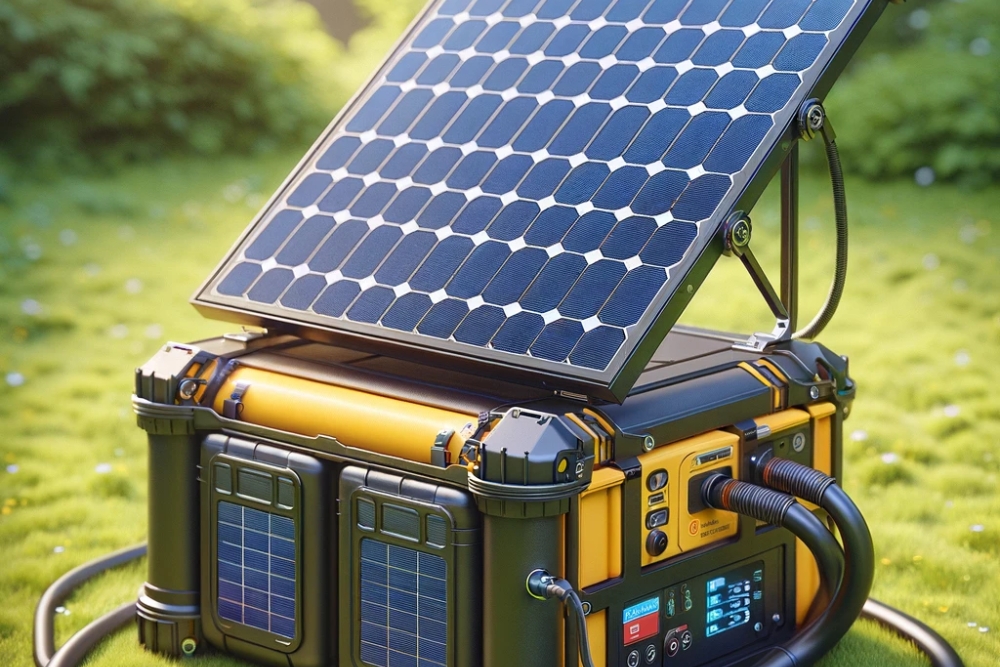A 2025 Review: Comparing 5 Leading Portable Solar Generators for Home Backup
With an increasingly unstable power grid and rising electricity costs, American families are seeking reliable backup power. Old gas generators are noisy, smelly, and require dangerous fuel. But a new generation of silent, fume-free solar generators has arrived. These powerful devices can keep your essential appliances running during a blackout and are perfect for outdoor adventures. This guide reviews the top models for 2025.

Power outages can strike at any time, leaving households vulnerable to disruptions that affect everything from food storage to medical devices. While traditional gas generators have long been the standard for emergency backup power, portable solar generators have evolved significantly in recent years. These systems combine battery storage with solar charging capabilities, offering a cleaner, quieter alternative that requires no fuel and produces zero emissions. This 2025 review examines five portable solar generators that stand out for home backup applications, analyzing their performance, capacity, and value.
How to choose the right size solar generator for your home
Selecting the appropriate solar generator capacity begins with a thorough assessment of your power needs. First, identify all critical appliances and devices you’ll need during an outage. Make a list including refrigerators, medical equipment, lighting, communication devices, and other essentials. Next, check the wattage requirements for each item—this information is typically found on labels or in user manuals.
For accurate sizing, calculate both the running watts (power needed during normal operation) and starting watts (the surge required when devices first power on). Refrigerators, for example, might need 200 watts to run but 600 watts to start. Add up your essential running watts, then ensure your generator can handle the highest starting watt requirement of any single appliance. Most households require between 1,500-5,000 watt-hours of capacity for basic emergency backup, while those wanting to power more devices or last through extended outages should consider systems offering 3,000-10,000 watt-hours.
Gas vs. Solar Generators: A head-to-head comparison
Traditional gas generators and solar generators differ significantly in several key areas. Gas generators provide immediate, consistent power regardless of weather conditions and typically deliver higher wattage output. However, they require fuel storage, produce noise and emissions, need regular maintenance, and cannot be used indoors due to carbon monoxide risks.
Solar generators, by contrast, operate silently with zero emissions, require minimal maintenance, and can be safely used indoors. They have no fuel costs after purchase and offer renewable energy independence. Their limitations include weather-dependent recharging, generally lower power output, higher upfront costs, and slower recharging compared to simply refilling a gas tank. While gas generators typically provide more raw power per dollar initially, solar generators often prove more economical over time due to eliminated fuel costs and minimal maintenance requirements.
The critical appliances you can run during a power outage
During a power outage, solar generators can power various essential devices depending on their capacity. Most mid-range models (1,500-3,000 watt-hours) can handle refrigerators (50-200W) for 10-30 hours, ensuring food preservation. Medical devices like CPAP machines (30-60W) can run for multiple nights, while communication tools including smartphones (5-15W), laptops (45-100W), and internet routers (5-20W) remain operational for days.
Lighting needs can be efficiently met using LED bulbs (5-15W each), allowing for illumination across multiple rooms. Smaller kitchen appliances like microwaves (600-1200W) and electric kettles (1000-1500W) can operate for short durations but significantly drain battery reserves. For heating or cooling, energy-efficient space heaters (400-1500W) or small fans (30-100W) can provide comfort, though higher-capacity generators are needed for extended use. Most portable solar generators cannot power central air conditioning, electric water heaters, or electric stoves, which typically require larger, whole-house backup systems.
Understanding battery capacity and solar panel wattage
Battery capacity, measured in watt-hours (Wh) or kilowatt-hours (kWh), indicates how much energy a solar generator can store. A 1,000Wh (1kWh) battery can theoretically power a 100W device for 10 hours. However, efficiency losses mean actual runtime is typically 80-90% of this calculation. Battery chemistry also matters—lithium-ion batteries dominate the market due to their energy density, cycle life (1,000+ charges), and minimal maintenance, though LiFePO4 (lithium iron phosphate) batteries are gaining popularity for their longer lifespan (3,000+ cycles) and enhanced safety.
Solar panel wattage determines recharging speed. A 100W panel produces approximately 100 watt-hours per hour under ideal conditions, but real-world performance averages 60-80% of rated capacity due to factors like cloud cover, panel angle, and temperature. When selecting a solar generator system, the panel-to-battery ratio is crucial—industry standards suggest panels should provide 25-40% of the battery’s capacity in wattage. For instance, a 1,000Wh generator would ideally pair with 250-400W of solar panels to achieve practical recharging times during daylight hours.
Comparison of 5 portable solar generators for 2025
The portable solar generator market has evolved significantly, with several models offering impressive capabilities for home backup. The following comparison highlights key specifications across five notable options available in 2025:
| Model | Battery Capacity | Max Output | Solar Input | Weight | Est. Price |
|---|---|---|---|---|---|
| EcoFlow Delta Pro | 3,600Wh (expandable to 25kWh) | 3,600W | 1,600W | 99 lbs | $3,699 |
| Bluetti AC200MAX | 2,048Wh (expandable to 8,192Wh) | 2,200W | 900W | 61.9 lbs | $2,099 |
| Jackery Explorer 2000 Plus | 2,042Wh (expandable to 24kWh) | 3,000W | 1,400W | 61 lbs | $2,299 |
| Goal Zero Yeti 3000X | 3,032Wh | 2,000W | 600W | 78 lbs | $3,399 |
| Anker SOLIX F3800 | 3,840Wh (expandable) | 6,000W | 2,400W | 132 lbs | $3,999 |
Prices, rates, or cost estimates mentioned in this article are based on the latest available information but may change over time. Independent research is advised before making financial decisions.
Each system offers distinct advantages. The EcoFlow Delta Pro features exceptional expandability and fast charging. The Bluetti AC200MAX balances capacity and portability with a competitive price point. Jackery’s Explorer 2000 Plus emphasizes modularity and user-friendly design. Goal Zero’s Yeti 3000X provides reliable performance with an established ecosystem of accessories. The Anker SOLIX F3800 delivers industry-leading output capacity for powering multiple high-demand appliances simultaneously.
When comparing these systems, consider not just the specifications but also warranty coverage (typically 2-5 years), customer support reputation, and availability of replacement parts or expansion components. Most manufacturers offer smartphone apps for remote monitoring and control, though feature sets vary considerably.
Are solar generators a smart investment for the average family?
The financial case for solar generators depends on several factors, including your region’s power reliability, electricity costs, and how you value resilience. In areas prone to frequent outages, the cost of food spoilage, hotel stays, or business interruption during power failures can quickly exceed the investment in a backup power system. Additionally, some homeowners insurance policies offer discounts for homes with backup power solutions, further improving the long-term economics.
For environmental considerations, solar generators eliminate the estimated 20-30 gallons of gasoline a typical household might consume during extended outages with traditional generators. This reduction in fossil fuel usage represents approximately 400-600 pounds of CO₂ emissions avoided per outage week. Beyond emergency use, many families find daily utility in their solar generators for camping, outdoor events, or powering tools in remote locations, extending the value proposition beyond mere backup capabilities.
When properly maintained, today’s lithium battery systems can last 7-10 years before significant capacity degradation occurs, making them a durable long-term investment. While the upfront cost remains higher than comparable gas generators, the elimination of fuel costs, minimal maintenance requirements, and versatile use cases make solar generators an increasingly practical choice for the average family seeking reliable backup power.




